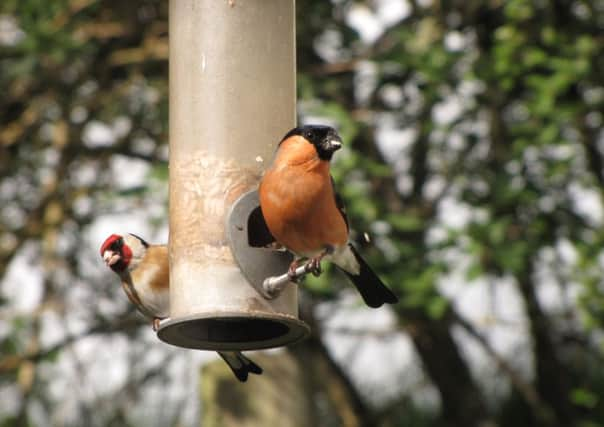Country & Coast: Look out for birds this winter


It is only when the daytime temperature hovers around zero that I am visited by two beautiful members of the finch family, bramblings and lesser redpolls, and my nut feeder is graced by the cute lesser spotted woodpecker.
However, to attract those sorts of garden VIPs in a mildish, wettish winter of the sort we had been having until these past few weeks you must either live in some bucolic idyll of a location or be prepared to spend a fortune on bird food.
Advertisement
Hide AdAdvertisement
Hide AdI know of one woman in Leeds who sneers at the quality of commercial mixtures like Jamie Oliver does about school dinners, and her weekly bill for seeds and nuts comes to over £50. But in return for her investment she has created what amounts to a miniature bird sanctuary.
For those who do not have gardens, though, there are some great public bird tables where anyone can enjoy watching the massed ranks of squabbling greenfinches or - on a good day - obtain at least fleeting glimpses of nuthatches or even marsh tits.
One I have already enjoyed this winter is near the Forestry Commission’s car park on Allerthorpe Common, near Pocklington at the foot of the Yorkshire Wolds where a beautiful mistle thrush posed for several minutes. Quite the showing.
Another place worth a visit is the privately run Rodley Nature Reserve, just off Leeds Ring Road on a former Yorkshire Water site next to the River Aire, where members have created what they call a “Farming for Birds” field in which crops like quinoa, linseed and kale are grown as a natural source of winter food for birds.
Advertisement
Hide AdAdvertisement
Hide AdHere, you not only get the chance to see garden visitors like chaffinches pecking around for seeds, but it is also an ideal spot for taking in the sights of wetland species like common snipe and reed buntings.
In recent months I have been visited by wild mallard and the odd heron, both attracted by a neighbour’s pond, but the most interesting garden tick of the winter has been a beautiful male blackcap.
Most people see this large warbler and hear its melodic babbling song only in spring and summer, and then it migrates to north west Africa, but now it is spending more winters in the UK.
I have also seen it in December when I lived in Headingley, and in February in my Ilkley garden.
Advertisement
Hide AdAdvertisement
Hide AdI suspect that blackcaps appear increasingly numerous in winter simply because the public are recording them more, thanks to the annual Great Garden Birdwatch which surveys the changing fortunes of our commonest species to check the health of the countryside.
Around half a million people took part last year and they counted some seven million birds between them.
Last year’s results also showed that the most colourful bird seen on our feeders, the goldfinch, has become our seventh commonest garden visitor, possibly due to increased availability in shops of its favourite food, nyjer seeds.
This year’s survey takes place over the weekend of January 24-25. All you need to do is spend an hour over the weekend counting the birds in your garden.
For full details on how to take part, visit www.rspb.org.uk/birdwatch